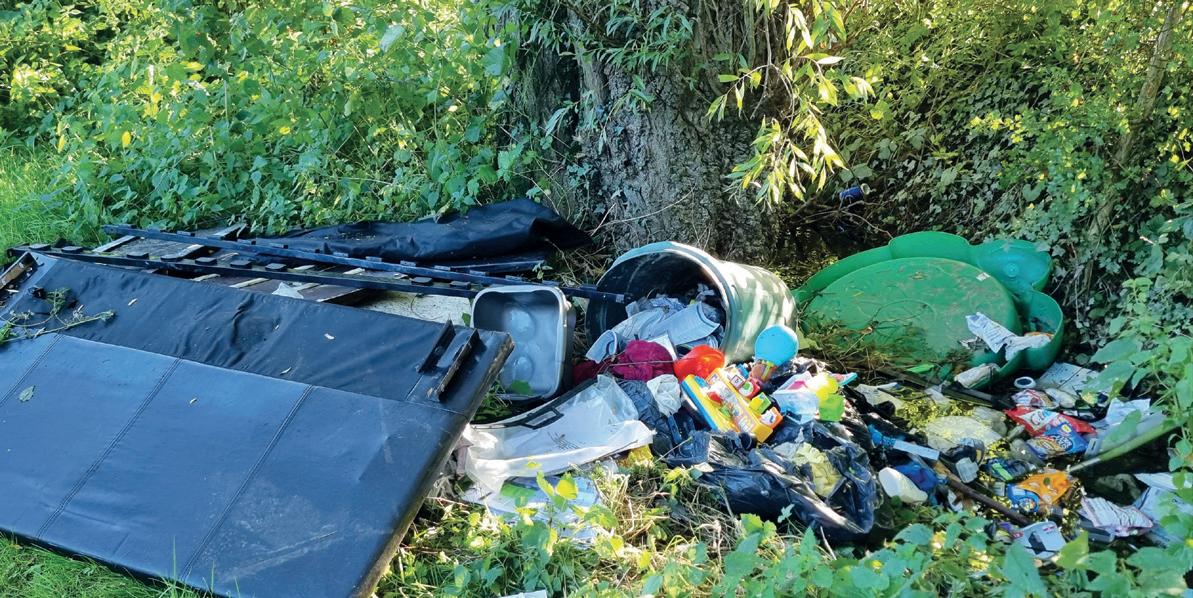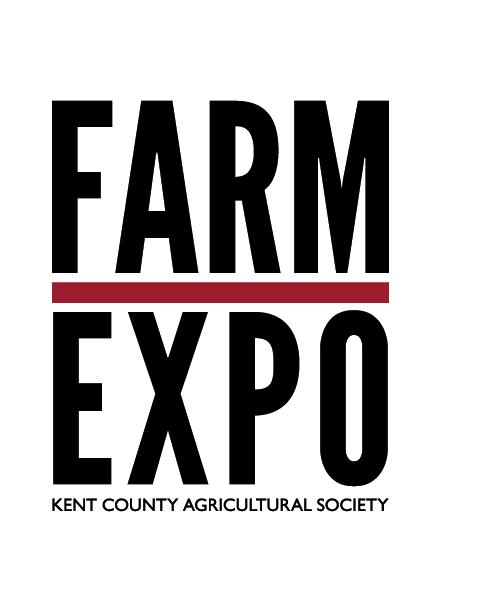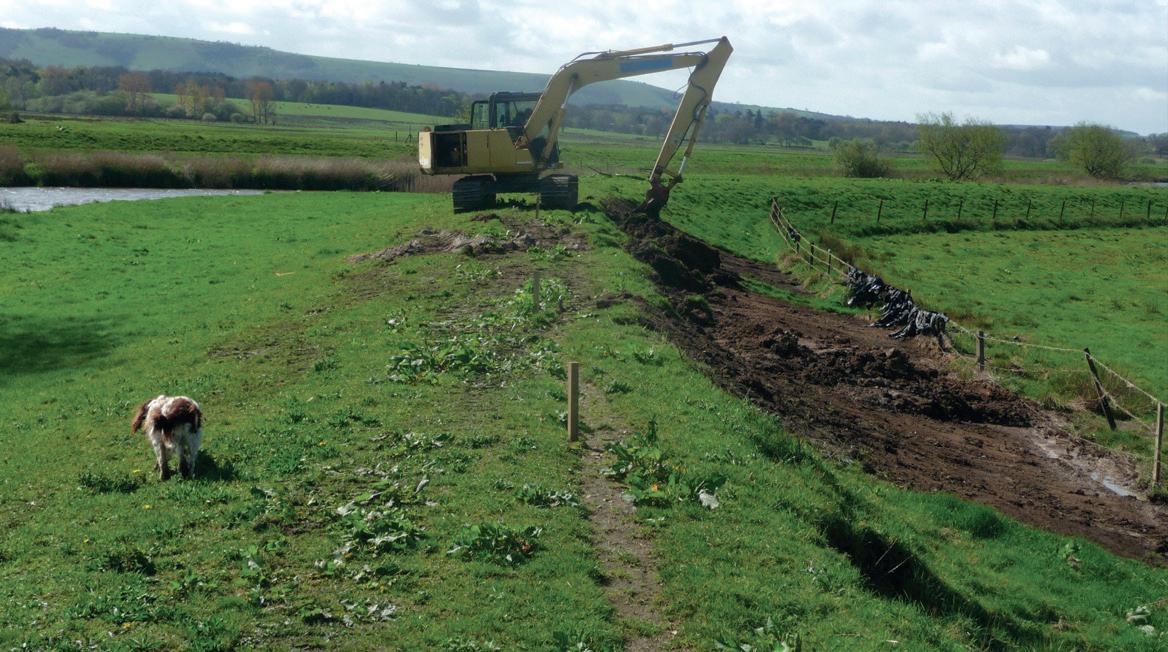
10 minute read
SARAH CALCUTT
WE COME FROM THE SOIL
It’s lovely to be invited to an event where there is both an interesting group of guests and also some outstanding speakers. I was very fortunate to be able to listen to Professor Alan Buckwell's thoughts on the un-sustainability of the British food system at an excellent evening hosted by Rift R&D. This followed the excellent inaugural Kent County Agricultural Society (KCAS) farming conference
There are many pressures on farmers, stemming from a confusion in agricultural, food and social policy. These include the drive for innovation, the need to produce food products from natural resources without destroying the environment, diet and health challenges, the biodiversity and environmental crisis and not least, the very poor current returns in farming.
Professor Buckwell began dissecting the list, starting with the food report and lack of resulting strategy – pressing home the point that we need a food system that doesn’t make us and the planet sick.
With diabetes still on the rise, the solution has to come from a healthy, British-grown diet with a minimum of onward processing. There is an enormous amount of work to be done on how we can shift the national diet with a balance of sources of vital nutrients, and how can this be done with less pressure for land? He referenced Tim Lang’s book Feed Britain and the continuing need to reset how food is regarded and how little is paid for it, with Alan, Tim and also Dieter Helm all agreeing that we need more agri-ecological production.
Professor Buckwell’s third point was that there is pressure to reduce the total area of agricultural land; we must devote some to carbon sequestration and return it to a natural state – clearly through the utilisation of marginal lands and peat restoration etc. His fi nal point was that some intensifi cation of the remaining productive area was necessary, the rapid adoption of new precision technologies coupled with older forms of land management being the focus of the ELMS policy shift. He ended with a challenge to the farmers in the audience: “Are you awake to the global innovation wave? Are you on track to be a part of this innovation in farming and environmental management?”
This all tied in well with the themes explored
SARAH CALCUTT
Executive Chair, National Fruit Show
at the KCAS conference earlier in the month, with Grace O’Dwyer from HSBC bank talking about how supply chains will use sustainability as a measurement metric in the selection of partners. “The gauntlet has been thrown down,” she stated. “Targets need an immediate start.”
She added that growers needed to be optimistic, with climate change a challenge that the industry can rise to. James Smith brought some sharp focus to the discussions with insight into the realities of farming in a changing climate. With a decision made to change production methods, 2021’s weather threw every possible negative climate trait at the potential crop.
James reminded the audience that we come from the soil and we are driven and dependent on the quality of our food; the health of our soil is imperative for the quality of that food. From a perpetual cycle of farming intensively with chemical control regimes, James has come back from the brink of leaving the industry to embracing the fi ve principles of regenerative agriculture: • Maintain living roots • Minimise soil disturbance • Livestock integration • Diversity • Protect the soil surface.
To learn more about James’ farming journey into regenerative fruit production, listen to the Farming for Change podcasts.
> James Smith

FRUIT SHOW MOVES DATE
The 89th National Fruit Show (NFS) has been moved to early November in a change that is expected to prove popular with growers.
The show will now take place at the Kent Showground at Detling on 2 and 3 November 2022 and has been repositioned to fully include soft as well as top fruit.
“This new date means growers will have picked the majority of their fruit and will be able to bring their teams to the show,” explained NFS Executive Chair Sarah Calcutt. “We know the industry will be pleased by the move into November and we are looking forward to seeing everyone again. “For the first time our show will be for growers of all fruit crops, ensuring that we are encompassing the broad range of challenges facing our sector, from regenerative techniques to the artificial intelligence (AI) and automation revolution required.” Ahead of the show, organisers from the Marden Fruit Show Society have announced that the society’s AGM will be held on Wednesday 6 April at NIAB EMR in East Malling, Kent.
As well as covering formal society business, the day will feature a full conference programme focused on the theme of UK Fruit Growing – The future, automation and research. The AGM is open to everyone in the UK fruit industry and will be available to attend in person and online. Sponsored by the Agri-EPI Centre, which supports the development of engineering and precision agriculture technologies and systems, the programme will look at how new technologies can help growers become more efficient and productive at a time of tight margins and chronic labour shortages. Dave Ross, chief executive of the Agri-EPI Centre, said: “For us, sponsoring the National Fruit Show’s AGM is a fantastic way of showing our support for a like-minded organisation tackling the collective challenge of how to shape the future of sustainable fruit farming in the UK. We’re looking forward to the programme and an interesting day.” The prestigious James Nichols lecture will be delivered by Professor Simon Pearson, director of the Lincoln Institute for Agri-Food Technology. A leader in inter-disciplinary ag-tech research, Professor Pearson is working on developing robotic solutions to drive productivity across the agri-food sector, including harvesting, phenotyping and crop care.
Also on the conference speaker’s platform will be Tim Mordan, deputy director of the agri-food chain at DEFRA. Tim will talk about the seasonal workers scheme, how the agencies involved are working to bring the right candidates to the UK and also about sourcing labour at home.
With Tim on the conference programme will be Lee Abbey, chief advisor, horticulture and potatoes, at the NFU. Jim McDougall from Outfield will be talking about the technology the company has developed with growers to assess orchards throughout the season using AI and drones. He will also share changes across horticulture in recent years, what Outfield's growers have found useful and where these technologies might be going in the future.
The afternoon conference session is in conjunction with NIAB/EMR and will include a visit to the new Growing Kent and Medway facility and a presentation of the latest research findings for the sector.
Sarah Calcutt commented: “This is a crucial time for the industry, with growers having to deal with a wide range of challenges, and this conference will showcase some of the exciting examples of how automation and technology can help producers to thrive in the future.”
www.nationalfruitshow.org.uk
Better people Best placed
SEASONAL LABOUR PLACEMENT
ag recruitment.eu|01227 806 789
SEED FERTILISER GRAIN STORAGE
ELVED PHILLIPS ARABLE NOTES
T: 01264 321 595 www.openfield.co.uk
As far as wheat exports go, Russia punches above its weight, for while it only produces 10% of the world’s wheat, it contributes 17% of global wheat trade. Ukraine is similar; it grows only 4% of the world’s wheat (compared to the EU/UK at 20%) but exports 12%. So, between Russia and Ukraine, they supply 29% of the world’s wheat, which is why, together with the disruption of oil supplies, any threat of confl ict or blockade in the Black Sea causes such volatility in world markets.
Those still prepared to off er marine insurance cover are still building in hefty “weapons grade” premiums for any Black Sea shipping business. Alongside this, but for other reasons, some record massive futures positions have been created, as for now this volatility has seemed never ending.
French MATIF wheat futures have hedge funds long of 116,000 contracts, whereas Chicago has funds short of 30,000 wheat contracts! If you add in 30-year high infl ation in the USA and Europe, you have a heady cocktail of risks being run by these hedge funds. This is unprecedented and can only add to volatility of commodity prices.
The February USDA report was considered to be the most out of touch with reality that has been seen in the past 50 years. That is saying something, as they have had some very unrealistic eff orts during that time.
ELVED PHILLIPS
Openfi eld

THE CLOCK IS TICKING
They seem to have completely ignored local agencies in South America that strongly suggest that the USDA production and export forecasts for maize and soya are 20 to 30 million tonnes too high. So, while world wheat has dropped in value, maize and soya have held their values and even increased.
In the UK we are, as I like to say, over halfway through the fi rst half, of the second half of the 2021/22 trading season. So, if you still need to sell for cash fl ow or space by the end of March or fi rst half of April, the clock is ticking and you need to get on with it.
Given that the wheat market peaked in the middle of November 2021, it has taken a long time to drift down slowly and, with spikes, has given lots of opportunities to improve your average selling price. Like some of my CMG pools, even if the remainder were sold at spot values, the average price would probably still be higher than achieved so far.
The last quarter of the second half (April to July) off ers many possibilities for yet more volatility and price increases. Ethanol production in the UK has been disappointing so far. It was expected that both plants would have been operational from the beginning of this year, but only one has and it has been using maize as well as wheat. The other does not intend to start producing until March and will use wheat. So the demand in the UK balance sheet for wheat used in ethanol production has been reduced from1.3 million tonnes to 809,000 tonnes. Despite this, when you factor in known exports to date, the UK has no wheat surplus at the end of June!
As last year, the key test will come when all of the futures stores have been cleared of wheat at the end of May. It will then be a question of what’s left on farms or in end users’ stores to see us through until new crop is available. Last year the expected wheat stock was not there, and neither was the barley, so every ounce was used up, while eager buyers clamoured for the fi rst cargos of French wheat and barley.
No one knows how much wheat has been imported into the UK so far. We know the expected milling must have come in as we didn’t have the quality, but the amount of feed is anyone’s guess. What we do know is that the imported price of wheat and maize are much higher than whatever our ex-farm prices are.
As I have said before, the biggest disappearing trick of all time is UK barley. Feed barley seems not to be there. Old crop malting barley demand has collapsed, so some of that is being fl ushed out, but where is the half million tonne surplus? Surely it cannot all have been fed on farm?
Until we have a “weather story” on new crop wheat and barley, I’m reluctant to start selling forward, when the diff erential between old and new crop is so high. Also, what “weather story” there is so far is not good. There are soil moisture defi cits and unseasonably high temperatures in the North American Hard Red Winter wheat belt, the Balkans, Black Sea, Russia, Ukraine, Africa and the middle East, and Spain is more or less in drought.
Last but not least, The Russian parliament has placed a document in front of President Putin, requesting that that he offi cially recognises the Ukrainian regions of Donbas and Luhansk as being Russian. Russia has now made its fi rst move and the markets hold their breath.
High fertiliser prices – do you want to save money?
Poultry manure delivered and spread throughout Kent & Sussex. High in readily available nitrogen, phosphate, potash and sulphur for your crops. Accurate GPS guided spreaders with experienced operators. Full analysis and advice available.











